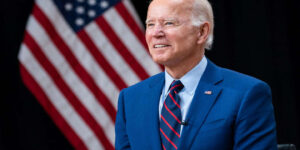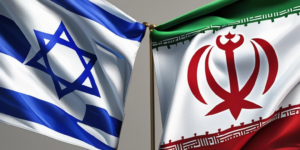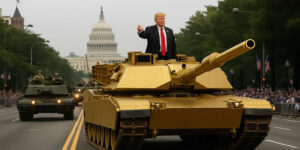Expelling the American Flag From School—Even a 4-Year-Old Knows It’s Wrong
“Oh, say, does that star-spangled banner yet wave/O’er the land of the free and the home of the brave?”
Apparently the answer is now no. What King George’s rockets’ red glare and the British bombs bursting in air could not do, the 9th Circuit Court of Appeals has accomplished in one sweeping judicial opinion.
Last week in Dariano v. Morgan Hill Unified School Dist., the 9th Circuit ruled that a public school can actually ban the American flag. Making matters worse, the decision allows the school to ban the American flag and still allow students to display flags of other countries.
Here’s what the court said:
“The unanimous three-judge panel said past problems gave school officials sufficient and justifiable reasons for their actions. The court said schools have wide latitude in curbing certain civil rights to ensure campus safety.
“‘Our role is not to second-guess the decision to have a Cinco de Mayo celebration or the precautions put in place to avoid violence,’ Judge M. Margaret McKeown wrote for the panel. The past events ‘made it reasonable for school officials to proceed as though the threat of a potentially violent disturbance was real,’ she wrote.
“The case garnered national attention as many expressed outrage that students were barred from wearing patriotic clothing.”
Here’s how the court reached the decision that the American flag could be banned:
“The court points out that the rights of students in public high schools are limited—under the Supreme Court’s decision in Tinker v. Des Moines Indep. Comm. School Dist. (1969), student speech could be restricted if ‘school authorities [can reasonably] forecast substantial disruption of or material interference with school activities’ stemming from the speech.
“And on the facts of this case, the court concludes, there was reason to think that the wearing of the T-shirts [displaying the American flag] would lead to disruption. There had been threats of racial violence aimed at students who wore such shirts the year before.”
Wait, so students displaying the American flag were threatened by other students, and the constitutionally appropriate way of handling the situation is to ban the American flag?
That’s precisely what this school did and exactly what the 9th Circuit affirmed. It’s an unbelievably conflated view of the First Amendment.
In legalese, this is called a heckler’s veto. This is when a heckler, the opponent of a particular viewpoint, is able to threaten violence or cause such a disruption that the authorities shut down the viewpoint with which they disagree. In other words, they win. They don’t like a viewpoint; they cause a ruckus; and that viewpoint they didn’t like gets silenced.
A heckler’s veto is not constitutional.
In fact, the case cited by the 9th Circuit, Tinker v. Des Moines Independent Comm. School, actually famously states that “neither students [nor] teachers shed their constitutional rights to freedom of speech or expression at the schoolhouse gate.”
In that case, the school wanted to ban students from wearing armbands protesting the Vietnam War in the 1960s—hardly a noncontroversial viewpoint, as protests about the war gripped the nation. Yet the Supreme Court upheld the right of students to express a viewpoint with which others disagreed. Hecklers could not silence them.
Yet, this school and this three-judge panel of the 9th Circuit have chosen to ban the American flag while allowing students to display other national flags.
Here’s the problem: Patriotism was punished while the perpetrators went free.
There is absolutely nothing wrong with celebrating Cinco de Mayo in public school. There is absolutely nothing wrong with students displaying the Mexican flag, the British flag or any other flag. We have a rich cultural history in America—a melting pot of ideas, backgrounds and interests.
But there is something very wrong with allowing students to physically threaten other students with violence and then rewarding the perpetrators of violence by silencing their opponents.
Instead of expelling the students threatening actual physical violence against their fellow classmates, they expelled the flag. They the expelled patriotic speech. And with it, they have expelled the First Amendment.
The solution could have been so simple: Ban the violence, punish the violators, and permit patriotism. Hearing about this decision, my 4-year-old exclaimed, “They can’t ban the American flag! What is happening?” He’s right. It’s so simple even a 4-year-old can understand it.
At the American Center for Law and Justice, we are preparing to file an amicus (friend-of-the-court) brief defending the American flag and patriotic free speech. Already thousands of Americans have signed on to our brief; join them today.
Matthew Clark is associate counsel for government affairs and media advocacy with the American Center for Law and Justice. This article is crossposted on Red State.




























































